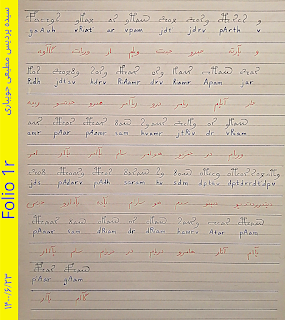Voynich Manuscript: Python Program for Rules of Omission
The following Python Program is able to omit the alternating pattern for two layers of letter repetition in initials and finals; a program with understanding of the second rule for two given words. If it has errors please comment below. print('Please Enter Voynich Transcribed Words:') x1=input('word one: ') x2=input('word two: ') y1=[x1,x2] if x1[-1]==x2[-1]: x1a=x1.replace(x1[-1],"") x2a=x2.replace(x2[-1],"") y2=[x1a,x2a] print('Result for first layer removal of final letter=', y2) if x1a[0]==x2a[0]: x1b=x1a.replace(x1a[0],"") x2b=x2a.replace(x2a[0],"") y3=[x1b,x2b] print('Result for first layer removal of initial and final letters=', y3) if x1b[-1]==x1b[-1]: x1c=x1b.replace(x1b[-1],"") x2c=x2b.replace(x2a[-1],"") y6=[...




